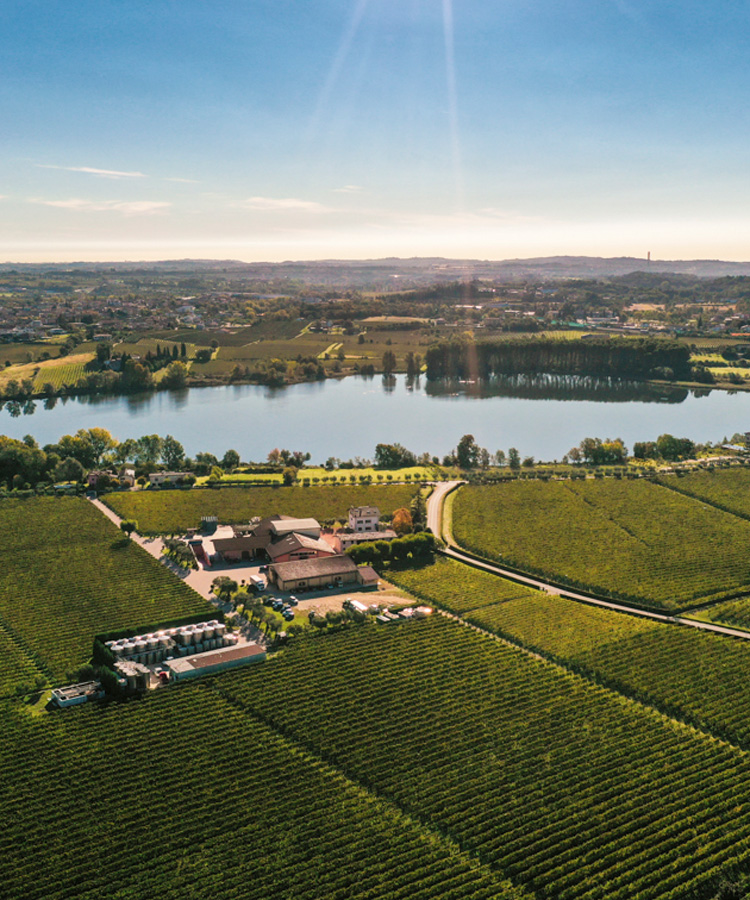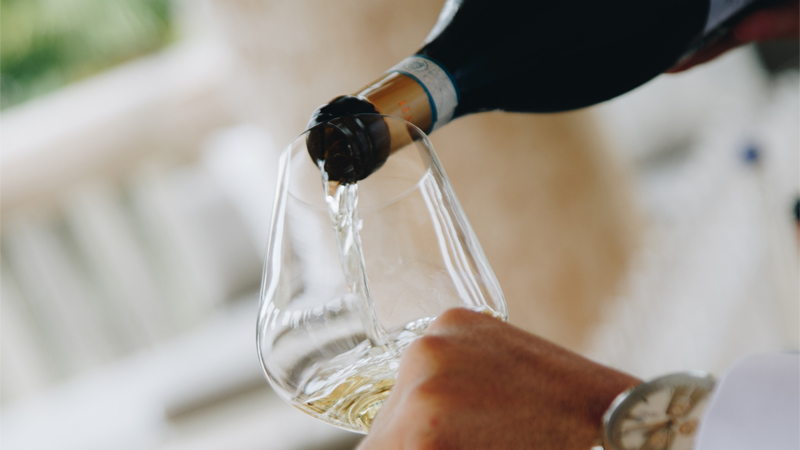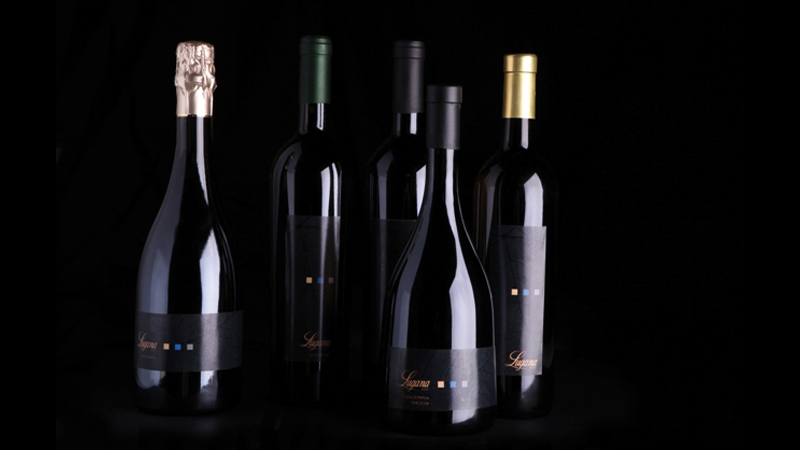
For those not yet familiar with Lugana, you’re not alone — this small DOC has largely kept to itself over the years, but it has an impressively long history. Earning its origin certification back in the 1700s, Lugana is one of Italy’s oldest protected wine growing areas; historians can trace cultivation of vineyards back to Roman times. Lugana is also one of the few Italian wine regions that crosses over two provinces, Brescia and Verona, and two regions, Lombardy and Veneto. And should you find yourself in northern Italy, the Lugana region is located on the edge of northern Italy’s largest lake, Lake Garda, which radiates impossibly stunning scenery.
Matthew Kaner, wine director and co-founder of Bar Covell in Los Angeles, tells us his favorite experiences with wines from Lugana came at an alpine restaurant nestled several thousand meters on the hillside above Lake Garda, over a bottle of I Frati from winery Cà dei Frati back in 2016. “The view of the lake, the cheese-and-meat-heavy cuisine, and the salinity of Lugana DOC bianco made for an incredibly memorable evening,” he says.
The region’s signature white grape, Turbiana, is what makes the wines so unique. Long thought to be a member of the Trebbiano variety, Turbiana grapes were called Trebbiano di Lugana until 2008 when a DNA test confirmed they are actually a close relative of another Italian white variety, Verdicchio, which is grown widely in the Marche. Turbiana is the sole variety from which the majority of Lugana wines are produced. The wines are salty and high in acid, while also rich in texture, the outcome of longer-than-usual skin contact during fermentation, making them a great pick for people who are into orange wines these days. The region produces five distinct styles of wine from Turbiana, with DOC designation: village-level Lugana, superiore, riserva, vendemmia tardiva (late harvest), and spumante (sparkling).
No matter the style, the terroir of Lugana is found in every glass, with a minerality and freshness consistent throughout. Nearly 90 percent of the wines are Lugana DOC. These bottlings are citrusy and lively, with subtle almond and floral notes. With Superiore comes a year of aging before release, and a spicier profile. As for Lugana Riserva wines, they must be aged at least 24 months (minimum six in bottle) and often are a deep gold in color with more concentrated flavors. The newest style is Vendemmia Tardiva, or late harvest, honeyed sweet wines that have great acidity that keeps them from being too sticky sweet. And finally, Lugana’s spumante wines are made in both the Champagne and Charmat methods, the latter producing wines that are simply crisp and lively, while the former are a bit more nuanced.
This small, idiosyncratic region has begun to create a buzz with sommeliers throughout the States thanks to their approachability, affordability, and ease of pairing at the table.
The wines can even serve as emotional support bottles, serving as Audrey Frick’s comfort wines in the midst of the recent presidential election. The wine director of New York City’s 1 White Street, Frick picked up two Lugana DOC wines that she was certain would help her through: the 2019 Ca’ Lojera and the 2018 Corte Sermana Cromalgo .
“Both recalled Grüner Veltliner,” she says, “Spanning from lean, crisp, and citrusy, to textured, savory, and salty; both pleasantly a touch bitter.” The Ca’ Lojera was fresh and vibrant, something to drink as an aperitivo with fried calamari or crudo. As for the Cromalgo, she sees it as an ideal match for salty dishes like bigoli in salsa, a Venetian pasta dish made with anchovies.
Comparing Lugana DOC with another beloved Italian variety, Allison Curatolo, sommelier at Chicago’s RPM Seafood, suggests wines from Lugana as a much more thrilling alternative to Pinot Grigio. “It balances a fresh sea breeze —or lake breeze [as the case may be] — with a stone fruit profile and a subtle white flower perfume,” she says.
Perhaps some of the reason the wines of Lugana have largely flown under the radar, suggests Michael Smith, sommelier at Osteria Mozza in Los Angeles, is that they’ve been overshadowed by Soave from the Veneto region. While Soave, made from the Garganega grape, is nicely dry and fruity, “Lugana wines have so much more depth and character,” he says.
“One of my favorite things about the region is that there are wines for every occasion,” he says. ”More simple DOC whites for weekend porch pounders; more complex superiore and riserva whites; and even delicious sparkling.”
Rosemary Walker, sommelier at Manhattan’s NoMad, echoes this appreciation for the breadth of the wines, noting that even though all wines from Lugana are based on the same grape, the wide spectrum of styles means that there’s a lot of opportunity for pairing. “There is a diversity here that one may not expect,” she says.
Her go-to match for Lugana DOC wines: roasted chicken. “I love roasted chicken,” she says. “I roast one a week, and this is the perfect everyday wine for it. These whites always outperform — both in quality and price point.”
This article is sponsored by Lugana DOC.




